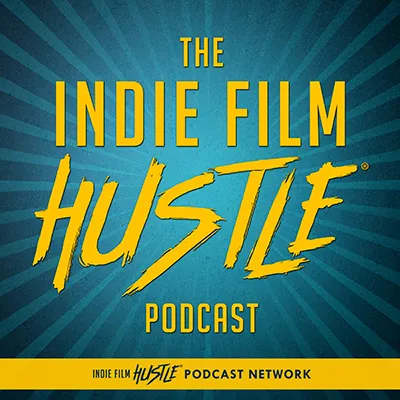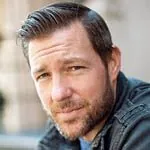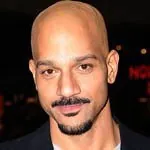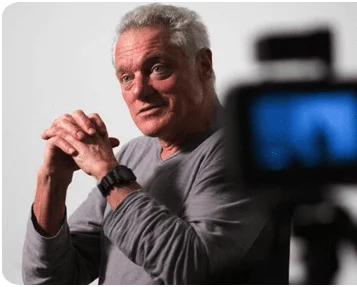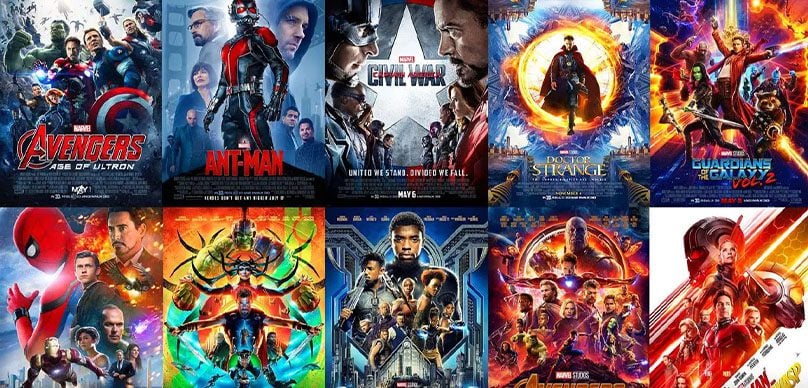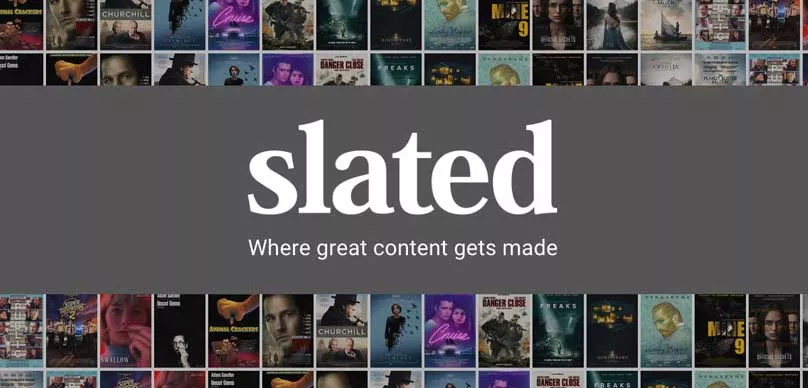Right-click here to download the MP3
You are in for a treat guy. Today’s guest is directing and camera movement guru Gil Bettman. Gil is a seasoned director directing features, television shows, commercials, and music videos for over 30 years. He has written two best-selling books:
- [easyazon_link identifier=”161593166X” locale=”US” tag=”whatisbroke-20″]Directing the Camera: How Professional Directors Use a Moving Camera to Energize Their Films[/easyazon_link]
- [easyazon_link identifier=”0941188779″ locale=”US” tag=”whatisbroke-20″]First Time Director: How to Make Your Breakthrough Movie[/easyazon_link]
Did I mention one of his filmmaking mentors is Academy Award-winning director Robert Zemeckis? We discuss what lessons he learned from Mr. Zemeckis and he also goes into great detail on how to shoot a killer action sequence. Gil and I have teamed up to bring his amazing course Hollywood Film & Television Directing Masterclass and it has become one of the best-selling courses we’ve ever released at Indie Film Hustle.
For the first time director, this book offers ideas and techniques in clear and concise language and illustrations. But of even greater importance, it is a survival guide for working with producers, technicians, and actors in the usual atmosphere of tension and chaos. This valuable book by an experienced director demystifies filmmaking.
– Irvin Kershner, Director, Star Wars: Episode V – The Empire Strikes Back
Here’s some info on Gil Bettman:
No one would ever see Gil Bettman as the retiring type. Bring Academy Award-winning director Robert Zemeckis to his directing class and Bettman wades right in, challenging his old friend’s point of view and sparking a good-natured debate about the best ways to tell a story using a camera. But that’s Bettman’s style. He has very definite opinions about how to block a camera or talk to actors from his days as a top action director for TV series like The Twilight Zone and Knight Rider.
Bettman learned the value of subjecting all film ideas to the acid test of a free-wheeling debate from Zemeckis himself while working as a screenwriter developing projects for Zemeckis at Universal and Warner Brothers. It’s a lesson Bettman wants to pass on to his students as well. With a degree from Harvard (with honors in English Literature), as well as an M.F.A. from UCLA, Bettman has directed a wide range of projects from feature films to music videos and corporate profiles. He recently directed a feature documentary, The Long Road to Cabo, for rock icon Sammy Hagar, and published a textbook, First Time Director, through Michael Wiese Productions.
Enjoy my conversation with Gil Bettman.
Alex Ferrari 1:22
So today guys, you are in for a treat. I want you to prepare to get your minds blown. I released a course of luck I think last week or a couple weeks ago, called the Hollywood film and television directing masterclass that our guest today taught his name is Gil Bettman. And Gil is a teacher over at Chapman University. He's a film professor there. And he's also been a director for over three decades, working on some of my favorite shows of the 80s doing a ton of different movies, television shows, music, videos, commercials, just tons and tons of stuff. And the man has written two books. First time director How to Make Your breakthrough movie and directing the camera how professional directors use the moving camera to energize their films. Both books are extremely highly recommended. And I will be putting links to everything we talk about in our show notes at indie film hustle.com forward slash 156. And Gil came to my attention when I was kind of trolling in the internet looking for cool film courses. And I came across his DVD and when I took the course I was blown away and I had to bring it out to you guys at the tribe. So we teamed up to release the course. And I gotta tell you, it is honestly one of the best directing courses has nothing to do with actors. We have great acting courses and directing actors and things like that courses. But as far as this is just a pure cinematic directing course. This is by far the best course I've ever taken. And if you read the reviews of the course on our on our course page, you'll see why people are kind of blown away by it. He talks about how to use the camera to do moving, establishing shots, how to cover dialogue with a moving camera, and how to shoot an action sequence. And he also we also talked about in this interview as well as in the course how insanely easy it is to add a tremendous amount of high production value to your action movie by creating a foot Chase, just like the legendary foot Chase and pointbreaks starring Patrick Swayze and Keanu Reeves, and it adds so much production value. It's so easy to do. And I'm like well next time I'm shooting an action movie I'm obviously going to be doing a foot Chase. It's pretty insane and we go a little bit we go actually pretty in depth about how to do it in this podcast. But at the end of the episode after our interview, I'm going to give you guys a special link to download the course at almost 50% off, just because you guys are loyal listeners and members of the tribe. Oh, and by the way did I happen to mention that? Gil worked very closely with Robert Zemeckis for years. And we talk a lot about Bob excuse me, Robert, about how they work together. They literally met each other at a film festival prior to, you know, Robert Zemeckis, even shooting us cars, which is before black to the future and his amazing career. And we talk a lot about what he learned from Bob and what he learned from working with him for so many years. But, you know, without any further ado, guys, I just want you guys to get ready to take some notes because this is going to be a pretty mind blowing episode. So enjoy my conversation with Gil Bettman. I like to welcome to the show Gil Bettman. Man, thank you so much for joining us on the show man
Gil Bettman 5:56
My pleasure.
Alex Ferrari 5:57
I appreciate it, man. So can you tell us a little bit about how you got started in the business?
Gil Bettman 6:02
I got started in the business in the days when television was much more action oriented. And I worked initially as a while I was at UCLA and out of UCLA. I got a I got signed to a contract at Universal Studios. It was a contract to write produce and direct
Alex Ferrari 6:23
Can you imagine?
Gil Bettman 6:27
It was actually it was it was called it was the seven years slave contract. They owned everything like I did for seven years. It was sort of a leftover from the days of EZ rider when Spielberg Yeah, this studio sort of boot sort of thought well, maybe there's these kids that we cannot get them young and sign them and they'll turn into Spielberg Spielberg got that same
Alex Ferrari 6:48
he signed that same deal. He
Gil Bettman 6:51
signed the exact same deal a couple of years performing, right, though Yeah,
Alex Ferrari 6:56
so then so then you you worked in television for a while.
Gil Bettman 6:59
I worked initially for this guy Glenn Larson, who was the executive producer of Galactica nightrider Fall Guy BJ in the bear Sheriff Magnum. No other shows that didn't make it. But he he in spelling and candle were the three big television powerhouses with like, multiple shows on the air. And so I did his post production for three or four years. And then I threatened to quit. Unless he let me direct nice yeah, and so I started breaking in directing did an episode of BJ in the couple episodes of BJ in the bear. And then I went on and directed nightriders for him. And, and that was so I started out in episodic television, doing the hour long stunt series, which was a good it's a good a very good training ground because, you know, the schedule and the budget are, are you know, hard to make, you've got to really be disciplined and know, you know, how to move a big team and command respect and it was also and how to get you know, how to shoot action efficiently, how to do everything efficiently. Because Yeah, 50 you know, you have seven days to shoot 55 pages with you know, 10 pages of stunts. Oh yeah, that's a lot it was but the good the good news was that the crews were great you know, the stunt guys the the grip grip camera electric, you know, because these were guys that could have been working on features, but they they preferred to work in television, because it was a steady job.
Alex Ferrari 8:48
Would you agree that television crews are some some of the top end technicians around
Gil Bettman 8:55
for that reason, they there's the the guys, all the guys that I will work with were I mean when I because then I did music videos, and then I did low budget features. And, and the I mean, I shot a feature in Dallas, you know, in 18 days.
Alex Ferrari 9:13
Then Jesus
Gil Bettman 9:15
with a crib with us for $600,000 was our entire budget and the crew. For example, the DP was the lighting gaffer on the TV show Barney until God Yes. But which was in doubt, shot out of Dallas, but he'd never he was not an experienced dp. He did a good job. But those crews used the low budget, you know, indie low budget feature crews were not anywhere near as good as the TV crews I worked with which you know, because those guys I mean they they could have worked in features but they wanted the the they want to get on a series that went through four or five years and then hey, what money they made they could put their kids through college, you know,
Alex Ferrari 10:02
right. It was a different time. It's definitely different time. Now I heard through the grapevine that you had a hell of a mentor. His name is Robert Zemeckis, a little known director. How was it having Robert Zemeckis as your mentor?
Gil Bettman 10:19
It was wonderful. I mean, it was, he's a genius, you know, so I got to work, you know, for years with a genius and, and the, initially, we were just, you know, we were friends. We met, we met at a film festival, the Broadway Film Festival, which, which doesn't exist anymore that was, but they had a little film festival here in LA, he won a prize, I won a prize. After during the screenings of the films, I kind of wandered out, ran into him in front of the popcorn machine at the progress, of course, and I said, You know, I loved your movies, and I loved your movie. And then it was, you know, and then we became friends. And the kind of the good news was that that was the basis of the relationship we were just meeting and because we love movies, you love talking about movies. And what happened actually was that he got married, and his, his, his wife was, and my girlfriend, the woman I were living with, we're friends. So it and your wife organizes your social life, you know, yes, I'm
Alex Ferrari 11:32
married. So.
Gil Bettman 11:34
So when Zemeckis was, you know, when he was when he was breaking in when he was doing all of his, I mean, when he made Back to the Future when he made Roger Rabbit, you know, I was like, hanging out with him
Alex Ferrari 11:46
socializing with him? Because he was your friend. Yeah. And you met him before he was Robert Zemeckis. Yeah, I met him, but you're exactly. And before used cars before any of that stuff.
Gil Bettman 11:56
Yeah. And and, you know, and then I mean, I guess the district complete the story. What's the Mecca is it you know, when he got the power, he said to me, I'm going to do for you. What Spielberg did for me, I'm going to get you a studio movie. That was like 1990, early 1990s. And so, you know, I spent five years in development with him, developed, we developed two projects, one at Universal and one at Warner Brothers. And he was the producer. I was the writer director. And we had we were the first script. The first project we directed was called carc crazy and actually, sort of in in various other iterations. It went on to become the Fast and Furious univer universal owned it. But again, we made we develop these movies, one of them at Warner's and then the other one was a project we developed it. One of them was universal. One of them was at Warner's and the one we developed at Warner's was a script that was written by Phil Hartman, who was you know, one of the comedian who was He's amazing. Yeah, regular on Saturday Night Live. And that script that we developed with Hartman was I mean, it was it that was amazing, because to develop a script that I was going to make as a director with with Bob Zemeckis and Phil Hartman, it was like, I was in the room with genius.
Alex Ferrari 13:36
Sure, of course, no. But from what I read, it didn't it didn't pan out as as many Hollywood stories don't.
Gil Bettman 13:44
Yeah, it didn't. The movie that that script the Hartman wrote, was brilliant. was hysterical, but it was a black comedy. And, and it was weird because every every creative person who read the script, every director, every actor, every casting director, every producer, every director, they all loved the script and every Warner's passed on it and then we shopped it you know all around town and everybody all the executives that we shopped it to Mike medavoy Joe Ross, Bob Shea you know, which was the che ran ran new line and and they all hated it cuz cuz cuz black committees are, you know, your hero is a mess. You know, a big hot mess. And they just, they just, it makes them really, you know, he really just they can't quite get it that the studio was that the audience is gonna love this guy. Despite the fact that, you know, his life is a mess.
Alex Ferrari 14:58
I gotcha. So you in your day, you've worked with plenty of actors. Do you have any tips on working with actors, especially for first time directors,
Gil Bettman 15:10
hang out with your actors get, hey, the best thing to do with the actor, the actor, director relationship works, if the actor trusts you, if he looks up to you, and, and thinks that you have insights. And the way to get that trust, is to find something that you and the actor both love. Whether it's and, and, and it's a sort of a, an avid pursuit of yours and the director and the actors it can be, Well, I mean, you know, with so with guys, if it's a guy actor, you know, you can always talk to guys about women. You know, it doesn't have to be women, it could be baseball, you know, if you're, if you're a Dodger fan, and the guest, your actors, a Dodger fan, you know, talk find out and, and talk about the Dodgers, and show him how much you know about the Dodgers, because then that's becomes the basis for him saying, This guy, you know, is bright and perceptive. So that when you give him a direction, he's going to respect it, you know,
Alex Ferrari 16:29
so build that relationship as much as you can prior to actually getting on the set. And then also during your shooting.
Gil Bettman 16:36
It's prior and so you know, socialize, I mean, go again, find out what they like to do. Did they like to bowl? Do they like to shoot skeet? They like to play tennis and do that with them? You know? it because it because then they then you will have this bait because because bottom line is when you're directing, and it's on the set, and you're in front of the cameras, they are they're terrified. The best, even the best ones. And they they will listen to anybody who they think is can help them, do a gig deliver a better performance, right? So basically, they honestly the honest truth is most of the time, they're only listening to themselves. Most of the time they're saying the director really doesn't know my process. I mean, you know that most good professional actors are actually now kind of almost surprised when a director tries to give them direction. Because they're used to coming on sets and having directors be mostly focused on the camera. Right. And I mean, even Zemeckis Zemeckis says, If I want an actor to be happy, I tell him to be happy. And if he's too happy, I say not that happy, less happy. And how he does it is between him and his shrink and I don't want to get involved
Alex Ferrari 18:06
that's a great that's a great light.
Gil Bettman 18:08
So all the sort of the whole thing about being a method, Director of method actors Zemeckis throws out the window, and basically because he because he can work with Tom Hanks, you know, you're with Tom Hanks and Meryl Streep.
Alex Ferrari 18:22
So Denzel Washington, I mean, the list goes on and on.
Gil Bettman 18:25
Yeah. And I've heard I've heard other actors talk directors talk about like directing Robert Duvall. At and somebody told me, you know, this woman who directed Robert Duvall, the movie said, Every now and then I used to try to throw a crumb over the wall. Because guys that are that big. They don't want direction. You know, right. I heard a couple of being interviewed recently about working with Brando on the Godfather.
Alex Ferrari 18:52
Yes, it must have been it was brutal. I know that story. Yeah.
Gil Bettman 18:57
But but but but in any case, in any case, you know, the actor is out there and, and he will listen to you if he thinks that what you're telling him
Alex Ferrari 19:10
will help you. Now, how do you tame an actor that's chewing up the scenery as they say.
Gil Bettman 19:18
You tell him to feel it, but not show it.
Alex Ferrari 19:23
Okay.
Gil Bettman 19:25
That's it. I mean, just say, feel it. But don't you're showing me too much, you know,
Alex Ferrari 19:31
a little bit more internal as opposed to Yeah, a little bit. It's so more more cinematic performance as opposed to a play.
Gil Bettman 19:38
Yeah. I mean, you know, there's nothing about directing actors. The simpler the better. The You know, it was cuz I've acted, I acted for five years. When I got out of UCLA. I joined I studied acting and then I joined a theater group and I did exercises you know, we met weekly, we brought in scenes, we put out a poll We rented a studio and rented a little theater in Hollywood we put on a play I was because I thought okay if I'm going to direct actors I need to know their process I need to stand in their shoes right? So I went I went the whole way and and you know what you discover is that when the director says action you can only you can only think of one thing to do because you're trying to you're trying to achieve your objective you're trying to be you know, that's the main thing and if and you don't want you can't think about a lot because if you start thinking about a lot you get out of character you get out of the moment so if you're if the actor is chewing up the scenery don't don't the less the fewer words you can use when you give an actor directions the better
Alex Ferrari 20:53
so the George Lucas go faster and more intense Yeah, yeah
Gil Bettman 20:59
yeah just I mean just even even if you even if you're not doing faster and more intense which is you know result directing actors you know will accept because believe me, you know, if you're George Lucas they'll listen to you but but even if you're using method acting and method directing and sanctity you know, is saying to the actor you know, seduce her or you know, make him leave the room or get him you know make make break him down you know make him cry if you say make him cry You know, it just keep it that's a you know, that's a method direction you're giving the actor an actor something to do you know, even if you use that you want it to be absolutely you know, make him cry,
Alex Ferrari 21:54
you know, something simple.
Gil Bettman 21:56
Yeah, get her you know, get her to hug you.
Alex Ferrari 22:01
Very cool now and this is something I always have I have a problem with with everybody like all our listeners and stuff and independent filmmakers I talked to is you know, a lot of them just say hey, I'm I'm just gonna be a director I don't need to learn anything technical other need to know about the camera, the lens, that's somebody else's job. Can you please explain why it's so important for the director to understand the camera?
Gil Bettman 22:25
Well, the main main reason is because you know, visual visuals side of directing has become much more complicated recently. Because it's, it's now you the language of film, is it demands that it that the camera be moving more than it's not? If you if you look at movies, you know, I mean, if you look at Woody Allen films 2030 years ago, the camera almost never moves. If you look at Woody Allen films today, the camera is always moving. That's because the language, the language of films, is a language and languages evolve. We don't talk the way we don't say, wherefore art thou, Romeo? Which doesn't mean where are you Romeo? It means why, you know, why are you Who are you Romeo? or Why are you so language changes, film language changes, and now film language is part of film language is a moving camera. And if you It's complicated, and if you step on the set, and and expect and don't know how to move the camera, then you have surrendered a huge you've surrendered the visual part of the visual storytelling element to the direct to the cinematographer. And and that's, then the movie that you're going to make is not the movie that you have in your head. And and you will have surrendered a huge part of the control to the cinematographer, you have to know as much about visual design as he does. Because that way you know you, you're he can challenge you, you can challenge him on an equal footing. And neither of you will be intimidated and you will make a better movie.
Alex Ferrari 24:24
And basically, being a working director today, you need to have that skill set. It's not like the olden days where you could just walk on a set with a bullhorn and not in a monocle.
Gil Bettman 24:33
No, no, no. Yeah. But specifically because again, it well there's two reasons. One is if you were if you're walking, if you're working professionally, and you're starting out, usually you know you know when I was doing episodic television I remember the cinematographer on night writer was well no it was fall guy was a guy named Ben Coleman and he was 82 years old. Wow. You know, so and I was 27. So you you go and and the crew you know when you direct and television, the DP it's his. It's his set. It's the showrunners set an actor, the showrunner. It's the actors, it's the star set an actor, the star, it's the DP set. And it's still pretty much runs that way. So, if you have a guy who is controlling the set, and he doesn't, you know, you can't stand up to him, and show him you know, as much about this as he does, then he's just gonna walk over you, you know,
Alex Ferrari 25:44
which we are. Which brings me to my next question, what as a director do you do when you have hostile department heads or actors or any crew on set that you have to deal with? Like, what are some techniques that you use to kind of deal with that? Because it happens to all of us?
Gil Bettman 25:57
Yeah. Well, you know, um, you know, you number one, you try to defuse every possible conflict, you try your best to always, you know, you know, there's two ways to hunt the bear, you can hunt the bear with a gun, you can hunt the bear with honey. And the, the best way is always to hunt the bear with honey. So yeah, I just was talking to a friend of mine, this guy, Andy lane, who, who's now a professor at Chapman, where I am. And he, he, he had a company called Crawford lane. He actually, he made valley girl, he was the producer and the writer of valley girl, Nicolas Cage back in the day. Yeah, so he found Nicolas Cage. So he now teaches at Chapman like I do and I posed this question to women, he said, you know, you make that person, your best friend. You know, and, and then that can be and I saw some hackers do that, I, I saw some mechas I would be in a room with some Meccas and we will be calling a studio head to ask him to, to you know to to give us a look at one of these projects and do a negative pick do to pick it up and turn around from from another studio. So he and he would talk about these guys in the most incredibly negative terms like us, like you know, he where he you got the feeling that if he saw the guy getting hit by a car, he'd walk away Okay, okay, and then he would get on the phone and in 20 seconds he'd have the guy laughing I mean, he would just charm this you know, it was you know, he knew his kids names It was like just do a complete snow job you know, he was a master yeah and with actors I can tell you with actors you know there there there is in you really in a way with actors in particular if you if you get on a negative basis with the actor you really are in trouble because he will he or she will stop listening to you. If they don't like you if they think this guy's a prick, I mean, you know, really, they they, they they you'll give them direction you'll because that's their job. They have to stand there and listen to you you know, and then what's going on in their head is this this jerk doesn't know how I work and I'm gonna nod my head yes, but I'm not gonna I'm not I'm not listening to him then you say action and they go and do something do something that's not anything like what you ask them to do
Alex Ferrari 28:47
you know? It's like dealing with a child
Gil Bettman 28:51
basically you know and then you're got bottom line is you know you unless you fire them you're you're that's the end of it you've lost that you know, right so with actors you with actors you really you've got you've got to hunt them with honey you've got to try to make them you know, like you and trust you and there's no there's there's once it goes south it's hard to get back. Yeah, it's hard now with cinematographers, you know, then or I found out that like we're working low budget, sometimes your cinematographer or your first ad or the you know, are not or your UPM are not are under trained and not, you know, on the top of their game, in which case, you just have to know enough about their job to do it for them. You know, you have to step in, and you say I put the 30 millimeter lens on and put the camera here, you know, I mean, and if I, for example, I, I know a lot about lenses and a lot about composition, I can't tell the director how to how to expose, I don't but if I did it would be better because you know if things go if a guy starts to a not have good ideas, right? And because just because he's not very creative or talented, then you have to, you have to you have to make him do your ideas, right? And and if and if he's not, and if he's going to be kind of a prick and ornery and and and say, Oh, you know I can't do that shot, then you have to know you say yes. Do that shot, you know,
Alex Ferrari 30:45
and this is how you This is how I've done that. I've done that multiple times. Yeah, yeah. It's it's, it's it's a game of psychology almost as a chess game. Sometimes. If you have someone who's trying to undermine you, or doesn't trust you, or something like that, and it's, it's tough, it makes it makes the job a lot more difficult. Without question.
Gil Bettman 31:06
I had a cinematographer on an episode of BJ and the bear. Stand there on the set, and say in a very loud voice. So that's where you want me to put the camera.
Alex Ferrari 31:19
Right? It's very passive, very passive aggressive.
Gil Bettman 31:22
Yeah. So you just you just have to kind of, you know, you have to be, you say, yes, that's where I want you to put the camera and here's why, you know, and stick
Alex Ferrari 31:33
and stick to your guns. Yeah. Now, so we've talked a bunch about actors and separate. Let's talk a little bit about camera, which is what you've been focusing most of your books and career on, have in recent years. Can you talk a little bit about the three kinds of camera movement? That is from your book?
Gil Bettman 31:54
Yeah. Okay, so this is this is actually in my book. I call this Bob Bob's rule. Because this was I mean, again, Zemeckis. This is the example of like, what you get when you work with a guy like so Meccas? Because not only does he know how to do it, right? But he knows why it works. That's the right way. He has come he's you know, he was the Magnus has got a he's totally right brain and left brain but he loves understanding why things work and how they work, which is, for example, why he's a he's a he has his own jet and he's a pilot, you know, because he likes the technical challenge. He likes all that which is why he got into very heavily into motion capture and anything that's new, a new technology, he who won't he's kind of got this research scientific side his personality, so Okay, so he noticed, you know, all directors that that you can name that. I mean, going back from DW Griffith up to through James Cameron, even even you're talking about you're talking about big budget, James Cameron, you know, mainstream or you're talking about indie, you know, art film, you know, Coen brothers or, or Ashkar for hardy or Pedro Almodovar, any of those, they all, only move the camera in a way so that the audience is not aware of the camera movement, all camera movement becomes invisible. So if the audience becomes aware of the camera and movement and says, Oh, look at that camera move, then you shot yourself in the foot because, and I'm telling that's why everybody does it this way they do it. Because the way that film works is that the audience has come there to be sucked into the story. What's your job as a director is to do is to make them believe to make them forget that they're watching a movie to make them start living through to become Luke Skywalker to become Don Corleone. You know, you you want them to, to be drawn into the story to the so much that they forget that they're watching a movie. And if they see a camera move, or then it's almost like seeing the microphone come into the shot. You know, it says this isn't real. This is your actors standing in front of a camera saying saying lines. It's not you know, it's not Don Corleone. It's my it's Marlon Brando, blah, blah.
Alex Ferrari 34:38
So how do you how do you like kind of go back and forth between that and now the camera always has to be moving? Well,
Gil Bettman 34:46
when the cameras always moving, you have to keep it moving in a way so that the audience does not see the camera move. There. So there and there's three kinds of camera movement which are always invisible, you know, and she Should you want me to tell you
Alex Ferrari 35:01
details just do you could just go over really quickly on those All right,
Gil Bettman 35:05
there's three kinds there's what I call externally generated camera movement then there's internally generated camera movement and there's moving establishing shots which is basically you know, because these are the ways that you can move the camera and the camera is always moving with the story. So if it's an externally generated camera move it's because the the focus of the story is moving. If it's if somebody is driving the example I use is Tom Cruise driving his van out of Philadelphia in War of the Worlds okay and it's the shot that Spielberg did that goes on for like five miles beautiful It's a beautiful shot Yeah, if he's driving down the he's driving down the freeway his kids are freaking out and he's trying to calm them down and tell them what's happening and so there's this shot that without cutting goes on for five miles well it's because the camera has to be moving as fast as the van because if it's not the fans gonna go out of frame you know, it could be so can be a move that long which is five miles or could just be you know, the bad guy puts some poison in somebody's drink. And that could be you know, like the move could be five inches it's the same thing. If the camera doesn't move the poison that hand is gonna go out of frame so that's and that makes up that's the most kind of that's the most kind of commonly used you know, invisible camera movie it's externally generated Now sometimes you have internally generated kamoun which is like what the center of the story sees or feels and and if it's what the center of the story sees it's a moving point of view shot so you the shot that precedes it is this shot of a person and their eyes are moving and it can be it can be just like that you know we have a guy and a soldier in a trench watching a tank watching the bad guys go by the only part of his body is maybe his eyes that are moving right but if his eyes are moving you cut from his eyes moving to wish to a pan of the tank going by and the audience will understand Okay, the camera is moving because the person who was doing the scene is moving right or it can be somebody walking down a hallway you cut their eyes then you cut to their point of view walking down the hall going into the Dragon's Lair you know got it or it can be it could be Spider Man flying you know if he sees spider man and he your touchdown on his face and he's flying then you cut and you can have a point of view of the ground flying under you and the audience will understand that it's the camera is flying through the air because that's what he sees.
Alex Ferrari 38:07
And how about the movie master
Gil Bettman 38:08
and and then but there's the circus moving establishing shot is if it's the beginning of a scene at the very if you in one location, your one location and then you cut and you're you're in a new location, you can move the camera or you can fly the camera around like Tinkerbell icky, it could be you can cut to a casino and you can be up in the rafters with a drone and fly through the whole casino and and end up on a you know on your hero at a credit and a blackjack table. Right. But the audience will understand that if it's a new place and they haven't been there before. The camera is just moving to show them the everything that they need to see to understand what happens next.
Alex Ferrari 38:57
So so that opening that restaurant shot that nine minute restaurant shot on Goodfellas is a great example of a moving master.
Gil Bettman 39:05
Yeah, well that's but that's that's a moving master that basically that that does one thing that a moving master does, which is try to eliminate edits. Yes, you know, yeah, because that's there's five things that you want to do when you move when you move a camera, there's five tasks that you need to fulfill. And one of them is to eliminate edits. Because moving shots are the difference between a moving shot and a static shot. Basically, the way that it looks, is there's two ways that moving shots look different from static shots. Number one, static shots don't can't last more than 567 seconds because they run out of information. You know, you're looking at you're looking at one direction, you know if it's two people talking to each other you're looking at one person they say something now this person says something off camera you got to cut to the reverse you know? Or because think of it if the cameras only pointed in one direction then your movies gonna end up looking like a play like a piece of theater.
Alex Ferrari 40:16
Right right right. But
Gil Bettman 40:19
so but if you move the camera, you can you can eliminate you can shoot the entire movie without an edit. Moving shots can see can scan like Russian arc or rope right? Moving shots can be used the shot that we described with Tom Cruise, leaving Philadelphia in his van getting away in War of the Worlds that shot goes on without a cut for like two minutes. And there's and those are these famous winners like the shot of of Ray Liotta walking into the Copacabana in in in Goodfellas. those are those are these kind of moving master shots that kind of when it comes to eliminating edits go all the way to the point where they don't just eliminate some edits they eliminate all the edits
Alex Ferrari 41:16
and that's if you can pull that off it's it's very it's very efficient.
Gil Bettman 41:22
Well it's efficient but it's also the reason if you do a shot that goes on that long like the shot of liotta walking to the Copacabana or you know what's the other you know the famous ones are
Alex Ferrari 41:36
Touch of Evil player
Gil Bettman 41:38
yeah the player the opening of the Touch of Evil snake guys Nicolas Cage right yeah, those those those are if you go that far you like the shot I know if the shot of crews driving out of the Philadelphia War of the Worlds that shot must have cost a million dollars or more because it's because it's all CGI it's all the only thing that's real in that entire shot is the van and the acuras sitting in it right everything else has been added in post which is a huge expense and and not particularly efficient
Alex Ferrari 42:18
no I actually I actually just saw the behind the scenes of Bay Michael Bay working on transformers and they had a new gimbal of some sort for the camera that did something similar to what they didn't war the worlds but they did it practically yeah which is insane but there's just so many different ways of moving
Gil Bettman 42:38
that gimbal and those and those technicians
Alex Ferrari 42:42
oh god oh my oh yeah, yeah.
Gil Bettman 42:48
So in a way those big long winners are the you know, is the one that I sort of point to often is the one of Travolta walking into jack rabbit Slim's in Pulp Fiction What
Alex Ferrari 43:04
a great great Warner yeah it's
Gil Bettman 43:06
a great one and and but he didn't Tarantino didn't do that in Reservoir Dogs Why? He didn't have the money right so as soon as he got the money and though and the schedule and the budget he did it and he did it because you know Tarantino he wants to show he can do what Hitchcock could do what you know what? What was? Well,
Alex Ferrari 43:30
sure yeah,
Gil Bettman 43:31
what score says he wants to show and that's what those big long winners which are really not that efficient show they show that's that's what I call directorial bravado. And if you get that kind of stuff, I mean you're saying I'm as good as these as I'm as good as the greats I could pull this off. Yeah. Yeah, that's tough Paul Thomas Anderson the shot no beginning of Boogie Nights, you know, so that those those are but even but going back to if you're shooting low budget, no budget, right? You still want to eliminate edits because that's, you know, if the shot if you do a master, the shots should play in one shot without a cut for as long as possible, because then it will have the, if it's eliminating edits, if it's playing in one piece, it's going to have that contemporary aesthetic of a moving shot.
Alex Ferrari 44:32
Got it? Got it. Now there was another thing I actually you know, one of the reasons we actually met is I was I was I found your your course online, the Hollywood film directing course and in that course after taking it. The one thing that I just was blown away by was the way you discuss foot chases, and breaking down how you can get so much production value, out of a foot Chase. And it's fairly cheap to do but it creates a tremendous amount of production value like and you use Point Break which is you know one of the all time great foot chases So can you talk a little bit about how important a foot Chase is sometimes just to give you a good amount of production value if it works in the story We'll be right back after a word from our sponsor and now back to the show
Gil Bettman 45:29
yeah your foot chase you know is is your low budget no budget director filmmakers kind of a way to put to create an action sequence which can have as much tension and as much spec you know, spectacular action as any you know, any car chase in the Bourne Identity or whatever it's that because you've got instead of having moving cars you have moving people but the difference is that you know, that's you need you need a crew here you need you know, you need 100 guys and 50 cops to do moving cars, you have two people running one after the other up nothing you need, what you need is you need two guys, two actors or two doubles who can run I need a camera man who can handhold the camera and run and that and and and and then and then actually if you look at Point Break, if you look at Point Break, which saves what she did with kathryn bigelow did there which is kind of you know, kind of the secret is you run the in your two guys or whatever through his many narrow spaces as you can find. And you shoot it with the wide angle lens and 10 millimeter lens on what's called a pogo cam, a pogo cam is simply a plate where the camera can be bolted down onto with a poll, it's about two feet in length and awake at the bottom of the pole grips make these things in their backyard. If you put the 10 millimeter lens on and you handhold it, you get a good shot, which actually is not it's jittery, but in a way it's only enhances the energy of the shot. Right? Right. If you use a wide angle lens, you you can you generate a in in narrow spaces, what happens is you get you generate a huge amount of energy because whatever the walls that you the way that you do it is the walls going by the camera as you chase after the chaser, or the person being chased, generate a huge amount of energy as they whip by the camera. And, and, and the beauty of it is is that you know, everything is in focus. Right, right, if you're shooting with an incredibly wide lens, so what's your framing can stay in frame, it's an you know, anybody can do these shots, okay? The other secret that you've got to follow so it's basically wide angle lenses in narrow spaces and and end up with a what would a 10 millimeter lens you'll get a huge amount of energy. The other trick that you have to follow that if you look at the Point Break Chase is that you shoot each chaser each participant in the chase in a separate setup. You don't do tie in shots, you don't do shots where you see both of them and and the reason the reason for that is is that you if you took if you took two guys, and you did a two shot of them running 100 yards right? It would eight and you saw that they ran the length of a football field and and you did it in a tanning to shot, that shot would last for 10 seconds, it would take them it would take them 10 seconds to go from one goalpost to another right right. But if you shoot if you shoot them in separate setups if you don't shoot but if you shoot the usually the way you shoot it is you shoot the leader from behind, and you should know you're following the leader and you're leading the follower with a 10 millimeter lens okay. So what you can do is you so if your first shot is the leader crossing the 10 yard line, then you cut back to the follower, right you know, on the on the going under the goalpost right, then when you cut back to the leader, he's at he's at midfield, and then you cut the follower and he's at the 30 yard line. Then you cut back to the leader. He's in the endzone and and so And that's and there's three or four cuts there and that that so each piece so you can get them from one goalpost to another in two seconds
Alex Ferrari 50:10
and it's a lot more it's a lot more vibrant
Gil Bettman 50:14
it's it's montage generates energy in itself you know and and with if you have them in separate pieces you can telescope them you know accelerate them through the the geography through the locations that they that they pass through
Alex Ferrari 50:35
and that's why Point Break is so brilliant because you're going through houses inside of houses outside of houses jumping fences till you finally get to that kind of football field which is the LA River right but by the time you get there it's pretty much almost at the end of the of the of the chase but all the cool stuff is just jumping in and out breaking through windows if it's so energy it's it's really a brilliant foot Chase
Gil Bettman 50:55
and and the seek and the hero the person who is you know that that whose work is whose stellar work is really made that chase what it is what's the location manager
Alex Ferrari 51:10
because that's a lot of that's a lot of releases
Gil Bettman 51:14
you've but it's not so much that it's what you need to do is you need to I'm sure they did that that did that chase in Venice and what the what the location manager did was he found all of these narrow little passageways that you know we're we're kind of adjacent to each other because once your crew once you unload your crew and you offer your truck you want to shoot as much as you can before you load back up and move somewhere else because the because you can because when you're shooting the way you know people running with it with a shooting with a pogo cam you get take one take two is it you know that's it you've got it and then you move on you shoot you know you shoot out your locations and and and then you've got a you know but but you want to be able to have these narrow passageways, you know be walking distance so you don't have to load up on the truck. You can just keep shooting from one to the other the other you know, now Now the thing about what the when they when they're not in the narrow space, when they come when they went at the end of that Point Break Chase. At the end, they you've got to get them into the LA River. It's actually below in your Creek in Culver City, but it's this big, huge concrete storm drain of which there are dozens in LA. And the reason for that is is that that that's where Keanu blows out his knee. And they planted that he has a bad knee. So if you have a chase between your two here between your protagonist your hero Keanu and Swayze your bad guy although he's a lovable bad guy, if if the hero loses the bad guy, it has to be for absolutely rock solid inevitable reason. It can't be it can't be cheesy, you know the main right? The plot turns on it so they set up the Keanu has a bad name. So now they so what what was the the obstacle that Swayze can get past that Keanu can't get past is the 12 or 13 foot straight down drop from the ledge of the storm drain to the bottom so Swayze goes off of it manages to do that drop and I gotta tell you I wouldn't dry and do it right he does it Yeah, cuz he's he's supposed to be a top athlete. Then Keanu comes along behind him and blows out his knee and loses him okay, but now the what happens in often is when you're doing a chases, you can't do the whole thing in narrow spaces, they had to get them to that wide open space of the L of the ball and your Creek in the storm drain. When you get into a big wide open space. Instead of using the 10 millimeter west along you lose used 100 150 200 and and you have them run on the x axis you have them run across the frame and and you shoot them with that long narrow lens. And that that accelerates the motion
Alex Ferrari 54:23
and it adds a tremendous amount of production value to a low budget to a low budget film.
Gil Bettman 54:29
In the first case, you again it's it's it's your low budget filmmakers kind of go to way to add big production value to a low budget movie. idea. Slumdog Millionaire is probably one of the better examples because I don't think Danny Boyle had a lot of money on that movie. And and so what does he do? I mean, he does this amazing foot Chase. right at the beginning of the movie, because it's you know, it's it's just the audience's come to be entertained and an action sequence is entertaining and that end of twitches is the cheapest, easiest action sequence and it can be just as powerful as has something that costs millions of dollars.
Alex Ferrari 55:22
Now, you talk a little bit about lens ology and lenses, can you just tell for filmmakers who don't understand lenses? What are the basic lenses they need to understand instead of having to know all lenses and everything about lenses, what are those like core lenses that you need to understand?
Gil Bettman 55:38
Well, okay, there's three lenses that you need to understand. And if you understand the difference between these three lenses, you basically understand the difference between all lenses and that is, you have the normal lens which is the 15 millimeter lens, okay, and it's called the normal lens because the it's the perspective of the 50 is the same as our eyes and perspective means the rate that objects diminish in size as they recede into the distance camp so so that's how we judge distance is the rate at which objects get smaller as they go out towards the vanishing point. So with a 50 millimeter lens, it's, it's the same as with our eyes. The other two lenses are the 10 millimeter lens, which is the extreme wide angle lens. And, and the extreme telephoto lens which is like 100 or 150 or 200. Now the difference there is the the main difference is in the perspective, which is with a 10 millimeter lens, objects get smaller, as they go into the distance much much faster. They've diminished in size very rapidly. And so what happens is that that depth and distance is is vastly increased objects, you know, things that are that to our eye might look a certain distance when seen through the wide angle lens look much further away. and end with the telephoto the 200 or the 300 it's the exact opposite, that the telescopic objects do not diminish in size rapidly as they go towards the vanishing point. They because of the telescopic properties of the lens objects which are far away look bigger than they do to our eye. And because of that they seem to be closer to us.
Alex Ferrari 57:41
So I saw Robert Rodriguez do that tip once is there's a if there's a truck or a car coming to hit somebody and it was a little kid in the middle of the road and a car was a big truck was coming and Antonio Banderas jumped over and grabbed them. It looks super dangerous, but actually the truck was probably easily you know four or five 600 feet back when he grabbed the kid but it looked like he was right on top of it and that was used with a telephoto lens
Gil Bettman 58:07
yeah that telephoto lens can be used to do again she make misses where something's gonna miss something the book it looked like a hit because it because it compresses space and makes things look closer together than art. But but again it's like the the 50 the 10 the 300 200 it's like if you understand the difference between the 50 and the 10 every other lens in between a 50 and a 10 does the same thing except less so and everything in the same thing every good lens between the 50 and the 300 does the same thing except less so
Alex Ferrari 58:49
fair enough now what is your favorite action sequence and why
Gil Bettman 58:57
what is my favorite action? wow well there's a lot of them you know instead of like can't
Alex Ferrari 59:05
just pick one pick one that comes to your mind you're like well that was a really great action sequence
Gil Bettman 59:11
well you know there's the the Bond films The Bond films really kind of knock it out of the park every time because they do they always every Bond movie does something where it just you know hasn't been done before like Casino Royale was Yeah, Casino Royale that's exactly what I'm thinking of. I mean, you know, it's, it's, they really go all out to do most of the stunts that everybody else a most students have been done 100 times or 1000 times. Right, right. I think Casino Royale. Let me is that where he jumps off the crane? Yes, yeah, yeah, yeah, I mean, you know, that's just like, mind bogglingly difficult stuff. And you just, you know, you it's it distinguishes itself. By being something you haven't seen done before
Alex Ferrari 1:00:02
you know got it now if you were going to give advice to a filmmaker just starting out today what would that be?
Gil Bettman 1:00:11
Um, get hold of a good script you know and make it go out with a DSLR and telling your friends and shoot a feature um and but because you can do it you know if it didn't use what you know when I was coming up you had to have 35 millimeter cameras Oh yeah. And and, and dollies and all that and that now you know, you can handhold the whole thing I mean City of God you know, great movie was amazing movie was made, you know, with non actors all handheld. There's other movies that you know, other examples like that. The one on one that I love is in the company of men, which Yeah, Neil Neil, the boots were first of all, because he, he's a great writer. But, and so he's that that wrote the script, and it was all just people talking in rooms. But But the bottom line is that, you know, the technology is no longer a barrier, you you can make a movie that can be projected in a theater, with a seven D and 15. Your friends, if they will give you if they have the skills, and a lot of young people have the skills and the hat, they have the skills, and they'll give you three weeks of their time, all you need is the script and the actors. Now that's
Alex Ferrari 1:01:42
a little that's, that's a little sticking point. But yeah,
Gil Bettman 1:01:44
but But well, you know, um, you know, it's but it's true, it's true that that's, that's, or if you can't make a movie a feature, you come up with a short and make it and put it up on YouTube, you know, um, you know, there's there are brilliant little shorts, which, you know, showcase the skills of their, I mean, the one movie that I think of is that movie, it's called lunch date, which was made by some NYU students back in the 1990s or something, maybe earlier, it's just like, it's a black and white and it's and there's like, it's five minutes or 10 minutes long, and there's like five or six lines of dialogue in it, which were non sync. Of course, it was all ADR, right? Yeah, it was like, Yeah, exactly. But, um, you know, it's the, the thing that you've got to do is, is get the script and don't don't fool yourself in thinking that you can generate the script because I mean, that's one thing I learned with Phil Hartman, working with Phil Hartman, which was so that was a comedy right then the movie that I wrote with heart with heartbeat Hartman wrote, and I was gonna direct it as the mecca was gonna produce. It was a comedy. And it was funny because, um, Hartman when we started to write the script, we actually we first we had to redo the story. redo the ending for Zemeckis. And Hartman. And I took us about a year to do that. And both of us were, where he was about as good as I was in figuring out story. But then when it came to actually does the macro said, Okay, that's good. That's the ending. Go write it. Well, we went to go right. And Hartman said, okay, you sit at the computer, and I said, Well, okay, we'll take turns. So I sat down at the computer, and he stood up and he started he, firstly, he says, okay, he comes in the door, and he says, Hi. And then she says, and he says, and he's just acting up the parts because he's an improv act isn't that he was a master. Yeah, yeah. And I'm writing it down as fast as I can. And I just like, everything is brilliant, and funny. And I went home that night, and I said, Gil, if you ever tried to write something that's supposed to be funny, by yourself again, you're a fool. Because you because you need talent to do that, that guy's got talent. Right? You don't even you're not in the ballpark, he can write more funny lines in 30 seconds without stopping to think then you can write in you know, 30 years. Right? Right. So and actually is you know, again, it comedy is most of our most American American movies are you very rarely in this country see. A dramatic film. With with, were there with a downer ending No, or with any kind of serious, tragic ending. We don't make movies like that in this country. All of our movies, even our art films made by the Coen Brothers, or, you know, or Paul Thomas Anderson. These guys can be are very witty, they're very witty.
Alex Ferrari 1:04:58
There's some comic in Now, yes. All right. Now, what is I'm going to ask you my Oprah, Oprah Winfrey question. So prepare yourself. What is the lesson that took you the longest to learn in the film business or in life?
Gil Bettman 1:05:15
Don't be the only person in the room who can have good have a good idea,
Alex Ferrari 1:05:20
great, great answer,
Gil Bettman 1:05:21
the guy who's sweeping the floor can have a great idea. And so don't listen. You know, get on a get with create, surround yourself with creative people, and then give them give them all the rope in the world to hang themselves with. And, and, and, and, you know, and don't just think because the guy is that camera operator or, or the grip that he can't come up with a good idea. You know, because you're standing directors are problem solvers, you're on the set, it's chaos, and you're trying to solve problems. You know, they're 30, the likelihood that 3030 people, you're much more likely to solve the problem than if everything has to be solved by you.
Alex Ferrari 1:06:14
Yeah. And that takes that takes an ego that can handle that. And that's something that a lot of filmmakers have problems with.
Gil Bettman 1:06:20
Yeah, when you're present, you know, you start out thinking you know, everything and, and only you, you must the film is sort of like your temple, you build your little temple around that, and only you know how to make it.
Alex Ferrari 1:06:35
There's a lot of guys a kid.
Gil Bettman 1:06:37
Yeah, but just, yeah, it's, it's just being humble. You know, every day, I always say, the crew, and everybody, I want everybody to give me their ideas. I want everybody if they are trying to solve a problem, and you have a solution, I want to hear your solution. But I reserve the right to say no, without an explanation.
Alex Ferrari 1:07:00
Because you're basically the you're the gatekeeper of
Gil Bettman 1:07:03
what happens. Time, time and money. You just can't you just can't go You can't go run around being super polite to everybody, you know.
Alex Ferrari 1:07:13
Yeah, that's something I learned along the way as well as the directors like you know, you can't it's just you know, the time and the budget, the budgets going away.
Gil Bettman 1:07:21
But you say best if you listen, and then say no, I'm sorry. That's that. At least you kept the option open for inspiration on the part of somebody else to to guide you.
Alex Ferrari 1:07:36
Now, what are three of your favorite films of all time, and I won't hold you to the list of three films that come to your mind.
Gil Bettman 1:07:45
Well, you know, I mean, I love the Godfather. I think that's the Godfather one is, you know, genius film. I also love Sunset Boulevard. I mean, I think Billy Wilder is a genius. And that movie is, I mean, again, that movie is like, like the movie that I wanted to make with some Mexican Hartman. It's dark. It's weird. And it is so it's unique. There's no movie around. That's That's strange. Right? And then I like you know, I guess there's, I have a taste. The movie that was made most recently that I think is, is brilliant. Well, there's really two one is a separation, which won the Oscar for the best foreign film about three four years ago was made by an Iranian director. His name is Ashkar for Harvey. And, and I just think that's a fabulous film, but just that that'll be it's, you know, it does a lot of things and it's the low budget movie it's an RD movie and for Harvey is really an amazing director and writer.
Alex Ferrari 1:08:57
Now, we obviously the way I've met you is through your course that that we released called Hollywood film and television directing masterclass. And we will be putting direct links to that, that class and and your books as well. Can you talk real quickly about the the two books you have?
Gil Bettman 1:09:15
I got a book called first time director, which is I wrote in 2003 came out in 2003. It's basically what a first time director needs to know when he goes to make his first film because it's kind of a unique situation where you're going to always be a day late and $1 short, you're going to be sort of proving yourself you're not a proven entity yet. So there's a kind of a it's everything pre production, production, post production. And then the other one is directing the camera which came out in 2013. And that's basically you know, the, what a director needs to know to control the look of the film and it's divided into basically two sections. One is how to shoot action sequences, which is something that you know, is the look of the film is everything when you're shooting action. And number two is how to shoot dialogue scenes with a moving camera, which is tricky. But something you need to learn how to do if you're going to if your movies are going to look, but have a look of contemporary films.
Alex Ferrari 1:10:25
And you go over a lot of that stuff in the in the online course as well. Correct?
Gil Bettman 1:10:29
Yeah, that directing the camera is what the online course is about. It's it's, it's it divides itself into two pieces. One is shooting action. The other one is shooting dialogue scenes with a moving camera.
Alex Ferrari 1:10:43
And if you can master those two, you could be a working director.
Gil Bettman 1:10:47
Yeah. No, that's it. I mean, no, that's what you Those are the two most important skills you need to know if you if you're working on a major studio movie. Because the studio movie, the actors direct themselves, that's the dirty little secret that you know, that's what some of us this is Meccas can say when I want an actor to be happy, I tell him to be happy.
Alex Ferrari 1:11:12
Right? Because he's a but he's also working with the top actors in the world. Yeah. Yeah. It's Yeah, I'm doubt that he's sitting there with Tom Hanks or Denzel Washington, you know, trying to get into the emotion of the scene.
Gil Bettman 1:11:24
Yeah. Don't you don't do it. But but even so if you're working low budget, you need to direct actors. But if you're working low budget, you also need to control the look of the film, because that's not easily done. And you don't want to hand that over to the cinematographer. Because then the film won't be yours.
Alex Ferrari 1:11:43
Right? Right. And you need to be known as a director who can control the visual look of their vision. Yeah, exactly. Gil man, thank you so much for taking the time out to be on the show, man, you've dropped some major knowledge bombs for for the indie film hustle drive. So I truly, truly appreciate it, man. Thank you.
Gil Bettman 1:12:00
My pleasure.
Alex Ferrari 1:12:02
As promised, that was an insane episode, I've learned so much from taking Gil's course and I've actually read the directing the camera book, which is pretty much a lot of the stuff that you're going to learn in the course, but goes into a little bit more detail about it. So if you guys are interested in taking this course, by the way, when I launched it, it is probably one of the most successful course launches that we've ever done at indie film, hustle, that's how popular it's become. And that's how insane it people are going over it. Really, really love. It's just really great information, and I can't recommend it more highly. So if you guys want to get 50% off the course for a limited time, head over to indie film, hustle, calm forward slash Hollywood directing, that's indie film, hustle comm forward slash Hollywood directing, and you'll get actually over 50% off the course, which I think is standing right now at 29 bucks. so worth it guys, I can't even express to you how awesome this course is and how in love I am with it. So definitely check it out. And if you want to get links to anything we discussed in the episode, head over to indie film hustle.com forward slash 156 that's indie film hustle.com Ford slash 156. And if you guys get an opportunity, head over to filmmaking podcast.com and leave us a good review. Hopefully, on iTunes. It really helps to show out a lot. I really, really appreciate it. So as always keep that hustle going. Keep that dream alive and I'll talk to you soon.
Sign up to receive email updates
Enter your name and email address below and I'll send you periodic updates about the podcast.
YOUTUBE VIDEO
LINKS
- Gil Bettman – Website
- Hollywood Film & Television Directing Masterclass
- [easyazon_link identifier=”161593166X” locale=”US” tag=”whatisbroke-20″]Directing the Camera: How Professional Directors Use a Moving Camera to Energize Their Films[/easyazon_link]
- [easyazon_link identifier=”0941188779″ locale=”US” tag=”whatisbroke-20″]First Time Director: How to Make Your Breakthrough Movie[/easyazon_link]
- [easyazon_link identifier=”B00AOQ8MOQ” locale=”US” tag=”whatisbroke-20″]Point Break[/easyazon_link]
SPONSORS
- Bulletproof Script Coverage – Get Your Screenplay Read by Hollywood Professionals
- Audible – Get a Free Filmmaking or Screenwriting Audiobook
- Rev.com – $1.25 Closed Captions for Indie Filmmakers – Rev ($10 Off Your First Order)

